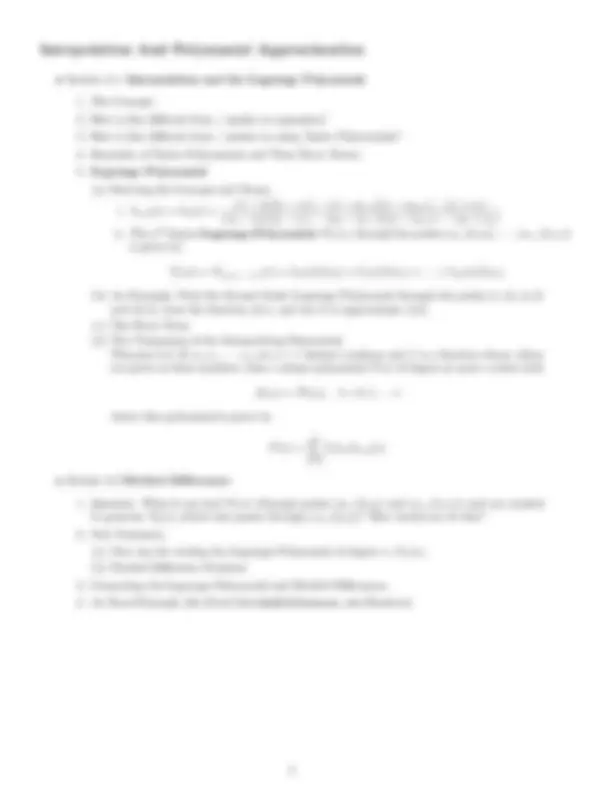



Study with the several resources on Docsity

Earn points by helping other students or get them with a premium plan


Prepare for your exams
Study with the several resources on Docsity

Earn points to download
Earn points by helping other students or get them with a premium plan
Community
Ask the community for help and clear up your study doubts
Discover the best universities in your country according to Docsity users
Free resources
Download our free guides on studying techniques, anxiety management strategies, and thesis advice from Docsity tutors
Material Type: Notes; Professor: McNelis; Class: Intro Numerical Analysis; Subject: Mathematics; University: Western Carolina University; Term: Fall 2002;
Typology: Study notes
1 / 2

This page cannot be seen from the preview
Don't miss anything!


MATH 441/541 - Numerical Analysis Sixth Meeting: Computer Arithmetic Continued & Root Finding Algorithms Thursday, September 27 th
x 3 = x 2 − 2 c b + sgn(b)
b^2 − 4 ac where
c = f (x 2 )
b = (x^0 −^ x^2 )
(^2) (f (x 1 ) − f (x 2 )) − (x 1 − x 2 ) (^2) (f (x 0 ) − f (x 2 )) (x 0 − x 2 )(x 1 − x 2 )(x 0 − x 1 )
a =
(x 1 − x 2 )^2 (f (x 0 ) − f (x 1 )) − (x 0 − x 2 )^2 (f (x 1 ) − f (x 2 )) (x 0 − x 2 )(x 1 − x 2 )(x 0 − x 1 )
Bisection Secant Newton False Position Fixed Point M¨uller’s α = 2 α ≈ 1 α = 1 +^
≈ 1. 62 (for simple roots) α = 1 α ≈ 1. 839 α = 1 (for multiple roots)
(^1) For M¨uller’s Method rate in particular see Michael T. Heath. Scientific Computing: An Introductory Survey, 2nd (^) Ed.. McGraw Hill, 2002. Page 234
1
Pn(x) = Px 0 ,x 1 ,···,xn (x) = L 0 (x)f (x 0 ) + L 1 (x)f (x 1 ) + · · · + Ln(x)f (xn)
(b) An Example: Find the Second Order Lagrange Polynomial through the points (1, 3), (4, 2) and (6, 5), from the function f (x), and use it to approximate f (2). (c) The Error Term: (d) The Uniqueness of the Interpolating Polynomial: Theorem 3.2: If x 0 , x 1 , · · · , xn are n + 1 distinct numbers and f is a function whose values are given at these numbers, then a unique polynomial P (x) of degree at most n exists with
f (xk) = P (xk), k = 0, 1 , · · · n
where this polynomial is given by
P (x) =
∑^ n k=
f (xk)Ln,k(x)